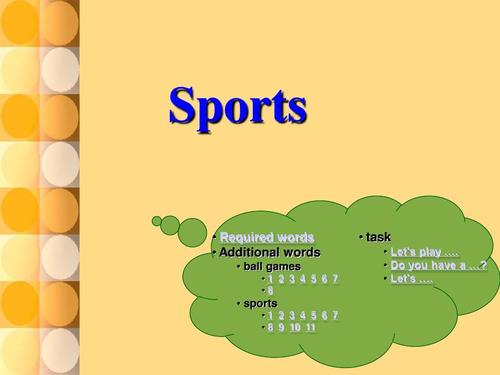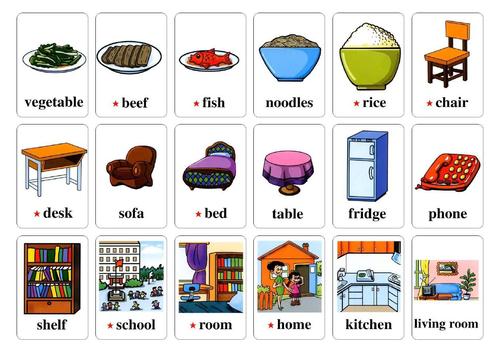欲望以提升热忱,毅力以磨平高山。下面课件网小编为您推荐的七年级下册英语知识点归纳总结 ,希望对你们有帮助!

七年级上册英语知识点总结归纳1
一、48个国际音标及26个英文字母的正确书写
要熟练掌握元音和辅音,5个元音字母(a, e, i, o, u),字母的正确占格及单词间距。
二、be动词的用法
be动词有三种变形,分别是:am, is, are。记忆口诀:
“我”用am, “你”用are, is用于“他、她、它”;单数全都用is,复数全部都用are。
三、人称及人称代词的不同形式(主格和宾格)
1、三种人称:第一人称(I, we),第二人称(you, you),第三人称(he, she, it, Maria)。
2、人称代词的主格,即人称代词位于句子主语位置时的形态:I, We, You, You, He, She, It, Maria。
3、人称代词的宾格,即人称代词位于句子宾语位置时的形态:me, us, you, you, him, her, it。
4、形容词性物主代词:my, our, your, your, his, her, its, their。
5、名词性物主代词:mine, ours, yours, yours, his, hers, its, theirs。
6、反身代词:myself, ourselves, yourself, yourselves, himself, herself, itself, themselves。
四、基数词(表示数量多少的词,大致相当于代数里的自然数)
zero, one, two, three, four, five, six, seven, eight, nine, ten, eleven, twelve, thirteen, fourteen, fifteen, sixteen, seventeen, eighteen, nineteen, twenty, twenty-one, twenty-two, twenty-three,twenty-four, twenty-five, twenty-six, twenty-seven, twenty-eight, twenty-nine, thirty, forty, fifty, sixty,seventy, eighty, ninety, one hundred,one hundred and one。
五、一般疑问句及特殊疑问句
1、一般疑问句:能用Yes或No来回答的问句。一般疑问句句尾读升调。
2、特殊疑问句:不能用Yes或No来回答的问句。特殊疑问句句尾读降调。
六、可数名词变复数
可数名词变复数时,有规则变化和不规则变化两种。
1、规则变化:
1)一般情况直接在词尾加“-s ”,如:cake-cakes, bag-bags, day-days, face-faces, orange-oranges等;
2)以s, x, sh, ch结尾的词,要在词尾加“-es ”,如:bus-buses, watch-watches, box-boxes等;
3)以辅音字母加y结尾的词,变y为i再加“-es ”,如:baby-babies, country-countries, family-families等;
4)部分以f (e)结尾的词,变f (e)为“ves ”,如:knife-knives, half-halves等;
5)以o结尾的词,加“-s ”或“-es ”,如:zoo-zoos, photo-photos, tomato-tomatoes, potato-potatoes等。记忆口诀:除了“英雄”hero外,凡是能吃的,加“-es ”,不能吃的加“-s ”。
2、不规则变化:
1)改变单数名词中的元音字母:man-men, woman-women, foot-feet, tooth-teeth等;
2)单、复同形:sheep-sheep, Chinese-Chinese, Japanese-Japanese等;
3)其他形式:mouse-mice, child-children等。
七、简单句的成分及主谓一致原则
最基本构成:主语+谓语+宾语,其中谓语由动词来充当。
主谓一致原则,就是句子的谓语要始终与主语保持数量上的一致性。当主语是第三人称单数(简称“三单”)时,谓语动词也要相应变成单数形式;当主语非“三单”时,谓语动词就用原形。实意动词变“三单”的规则如下:
1)一般动词在词尾加“-s ”,如:like-likes, tell-tells, play-plays等;
2)以字母s, x,ch, sh结尾的动词加“-es ”,如:guess-guesses, teach-teaches, watch-watches等;
3)以o结尾的动词一般加“-es ”,如:do-does, go-goes等;
4)以辅音字母加y结尾的动词,先变y为i,再加“-而是”,如:fly-flies, carry-carries等;
5)have的三单形式是has。
八、冠词的用法(名词前面必须要有冠词)
冠词分为定冠词(the)和不定冠词(a, an)两种。
1、定冠词the表示“特指”,可译为“这个”、“那个”、“这些”、“那些”。
2、不定冠词a, an用来表明(可数)名词的数量是“一个”。an用于以元音开头(注意不是以元音字母开头)的单词前,a则英语非元音开头的单词前。
3、不定冠词a, an与基数词one的区别是:不定冠词不是刻意强调“数量”,而基数词则强调“数量”。
九、助动词(do, does )的用法
只有实意动词作谓语时才涉及使用助动词。以like为例:
1)当句子为肯定句时不涉及使用助动词,只涉及“主谓一致”原则。
eg : I like English a lot.
Michael likes Chinese food very much.
2)当句子为否定句时,要根据主语的人称来决定使用相应的助动词:当主语为“三单”时,要使用does;当主语为“非三单”时,用助动词原形do。例如把下列句子变否定句:
Kangkang likes math.----Kangkang doesn't like math.
They like sports.------They don't like sports.
3)当句子变疑问句时,同样要根据句子的主语来决定在句首使用Do或Does.例如下列句子变问句:
Michael likes Chinese Food.----Does Michael like Chinese food? Yes, he does./ No, he doesn't.
Jane and Helen like music.----Do Jand and Helen like music? Yes, they do./ No, they don't.
十、名词所有格
1、Kangkang's books;Tom and Helen's desk; Ann's and Maria's bikes;
2、用of表示“......的”,但要从of后往of前翻译:a book of mine(我的一本书)
3、have与of的区别:
have一般表示“主动拥有”,往往用于有生命的人或动物;无生命的物体一般不能“主动拥有”,表示所属关系时要用of。例如:
I have a new bike. She has two big eyes.
a door of the house
七年级下册英语知识点归纳总结2
1. across from …… 在……的对面 across from the bank 在银行的对面
2. next to…… 紧靠…… next to the supermarket 紧靠超市
3. between……and…… 在……和……之间
between the park and the zoo 在公园和动物园之间
among 表示位于三者或三者以上之间
4. in front of…… 在……前面 There is a tree in front of the classroom. 课室前面有棵树。
in the front of…… 在……(内)的前部 There is a desk in the front of the classroom.课室内的前部有张桌子。
5. behind…… 在……后面 behind my house 在我家后面
6. turn left/ right 向左/右拐
on the left/right of……在某物的左/右边 on the left of our school 在我们学校的左边
on one’s left/right 在某人的左/右边 on my left在我左边
7. go straight 一直走
8. down /along……沿着……(街道 down/along Center Street 沿着中央街
9. in the neighborhood=near here 在附近
10 welcome to…… 欢迎来到……
11. take /have a walk 散步
12. the beginning of…… ……的开始,前端
at the beginning of…… 在……的开始,前端 in the beginning 起初,一开始
13. have fun=have a good time=enjoy oneself 玩得开心,过得愉快
14. have a good trip 旅途愉快
15. take a taxi 坐出租车
16. 到达:get to +地方 get here/ there/ home 到这/那/家 arrive in +大地方 I arrive in Beijing. arrive at +小地方I arrive at the bank. reach +地方
17.go across 从物体表面横过 go across the street横过马路
go through 从空间穿过 go through the forest穿过树林
18.on + 街道的名称。 Eg: on Center Street
at + 具体门牌号+街道的名称 Eg: at 6 Center Street
重难点解析
1.enjoy doing sth 享受做某事的乐趣,喜爱做某事 I enjoy reading. 我喜爱读书。
到目前为止,我们学了两个特殊的动词finish和enjoy,都是要带 doing.
I finish cleaning the room. 我扫完了这间屋子。
2.hope to do sth 希望做某事 I hope to pass this exam. 我希望通过这次考试。
hope +从句 I hope tomorrow will be fine. 我希望明天将会晴朗。
(从句即是一个小句子,这个小句子又放在大句子中,从属于大句子,所以叫从句。如tomorrow will be fine是一个从句,它又放在I hope 的后面,形成句中有句。)
3. if 引导一个表示假设的句子。
If I have much money, I will go to the moon. 如果我有许多钱,我就会去月球。
If you are hungry, you can buy some food in the supermarket.
如果你饿了的话,你可以在超市买一些食物。
七年级下册英语知识点归纳总结3
短语:
1.do one’s homework 做某人的作业 do housework 做家务
2.talk on the phone 在电话里交谈, talk about……谈论…… talk to(with)sb 和某人交谈
3.write a letter 写信 write a letter to sb 给某人写信
4.play with…… 和……一起玩
5.watch TV 看电视 TV show 电视节目
6.wait for sb/sth 等待某人/某物
7.some of…… ……中的一些
8.in the first photo 在第一张照片里(介词用in,序数词前面有the)
in the last photo 在最后一张照片里 a photo of one’s family 某人的家庭照片
9.at the mall 在购物街 at/in the library 在图书室 at/in the pool 在游泳池
10.read a book = read books = do some reading看书\阅读
11.thanks for = thank you for 为某事而感谢(后接动词要用v-ing)
重点句式:
1. 他正在干什么? What is he doing? 他正在吃饭。He is eating dinner.
他正在哪里吃饭?Where is he eating dinner他正在家里吃饭。He is eating dinner at home.
2. 你想什么时候去?When do you want to go? 让我们六点钟去吧。Let’s go at six o’clock.
3. 他正在等什么? What is he waiting for? 他正在等公交车。 He is waiting for a bus.
4. 他们正在和谁说话? Who are they talking with?
他们正在和Miss Wu说话。They are talking with Miss Wu.
5. 你们正在谈论什么? What are you talking about?
我们正在谈论天气。We are talking about the weather.
6. 他们都正在去上学。They are all going to school.
7.这儿是一些我的照片。Here are some of my photos.
这儿是一些肉。 Here is some of meat. (some of meat不可数,故用is)
8.谢谢你帮我买这本书。 Thank you for helping me buy this book.
9.family 家;家庭。强调“整体”,是单数;强调“成员”时,是复数。
His family has a shower. 他们家有一个淋浴。
His family are watching TV. 他全家在看电视。
七年级下册英语知识点归纳总结3
短语:
1 want to do sth 想要作某事
2 give sb sth = give sth to sb 给某人某物 / 把某物给某人
3 help sb do sth 帮助某人作某事 Eg: I want to help my mother do some housework at home.
4 help sb with sth 帮助某人谋事 Eg: I want to help my mother with some housework at home
5 in the day 在白天
6 at night 在晚上
7 talk with/ to sb 和----谈话
8 be busy doing sth 忙于做某事 Eg: He is busy listening to the teacher.
9 in a hospital 在医院
10 work/ study hard 努力工
11 Evening Newspaper 晚报
重点句式:
1 询问职业的特殊疑问词是what; 有三种主要句式
① What + is / are + sb? Eg. What is your mother?
② What + does/ do + sb + do? Eg. What does his brother do?
③ What + is/ are + 名词所有格/ 形容词性物主代词 + job? Eg . what is your job?
2 People give me their money or get their money from me.
3 Sometimes I work in the day and sometimes at night.
4 I like talking to people.
5 I work late. I’m very busy when people go out to dinners.
6 Where does your sister work?
7 then we have a job for you as a waiter.
8 Do you want to work for a magazine? Then come and work for us as a reporter.
9 Do you like to work evenings and weekends?
10 We are an international school for children of 5-12.



